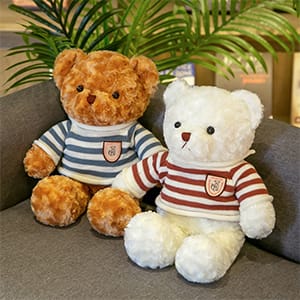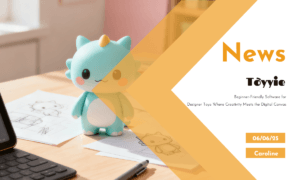Benefits of sleeping with a stuffed toy
Comfort and emotional support: Hugging a stuffed toy can bring a sense of security and comfort, especially for children who often see them as their first friends and comforters.


Comfort and emotional support
Hugging a stuffed toy can bring a sense of security and comfort, especially for children who often see them as their first friends and comforters.


Stress relief
Many people find that sleeping with a stuffed toy can reduce stress and anxiety, as this simple act can bring a feeling of relaxation and reassurance.




Transitional aid
For young children, sleeping with a stuffed toy can help them transition from co-sleeping with parents to sleeping alone, as it becomes their comforting object.


Sleep quality
Some studies suggest that sleeping with a stuffed toy can improve sleep quality, as it can provide a sense of comfort and relaxation, helping people to enter deep sleep faster.




Potential drawbacks or concerns
Hygiene considerations: Some people worry that stuffed toys may accumulate bacteria or allergens, which could negatively affect the cleanliness of the sleep environment.


Dependency
Children may become overly dependent on their stuffed toys for sleep, leading to difficulties when separated from them, which could affect their sleep habits and functioning.




Sleep disturbances
Stuffed toys may sometimes become a sleep disturbance factor, such as when they fall off the bed at night, causing children to wake up searching for them, thereby disrupting their sleep.


Safety hazards
Some types of stuffed toys may pose safety risks, such as those with small parts that could potentially cause choking hazards, posing a threat to children’s safety.


Guidelines for safely sleeping with a stuffed toy
Choose appropriate toys:Ensure that stuffed toys meet safety and age-appropriate standards.
First and foremost, size is an important consideration. Stuffed toys should be of a moderate size, neither too large nor too small, to avoid choking hazards or other safety risks. For infants and toddlers, size is even more critical, as they may put toys in their mouths.
Choosing stuffed toys made of soft, durable, and non-toxic materials is essential to ensure children’s safety and comfort. Natural cotton, silk, or soft synthetic materials are usually better choices because they are soft, easy to clean, and free of harmful substances.
Finally, craftsmanship is also worth considering. The stitching of stuffed toys should be sturdy, and the filling should be evenly distributed to ensure durability and safety. Checking various parts of the toy, such as seams, decorations, and stuffing, to ensure they are not loose or fragile is essential. Choosing stuffed toys from reputable manufacturers or brands is also a wise choice, as they typically pay more attention to product quality and safety.


Maintain cleanliness
Regularly wash and maintain stuffed toys to ensure hygiene and reduce allergen exposure.
Set boundaries
When sleeping with a stuffed toy, establish boundaries, such as limiting it to bedtime or specific sleep environments. Here are some suggestions on how to set boundaries:
1
Choose appropriate toys
Ensure that stuffed toys meet safety and age-appropriate standards.
Consider the size, material, and craftsmanship of the toys to ensure children feel comfortable and safe when sleeping.
Set clear time and occasion boundaries
Limit the time for carrying stuffed toys to bedtime or specific sleep environments. During the day or other activities, place stuffed toys in specific locations to prevent children from becoming overly dependent on them.
2
3
Control quantity and frequency
Set reasonable quantity limits to avoid children becoming overly dependent on stuffed toys. Regularly check the number of toys to ensure that children do not affect sleep quality due to excessive reliance on toys.
Create a dedicated sleep environment
Set up a designated area for stuffed toys in the child’s sleep area. Let children know when and where they can use stuffed toys, which helps establish good sleep habits.
4
5
Supervise usage
Monitor children’s attachment to stuffed toys and intervene when it begins to affect sleep or daily functioning.
Conclusion
Establishing appropriate boundaries is crucial for children sleeping with stuffed toys.
By choosing appropriate toys, setting clear time and occasion boundaries, controlling quantity and frequency, and creating a dedicated sleep environment, children can develop good sleep habits while maintaining a healthy relationship with their stuffed toys.
Parents should pay attention to their children’s needs and circumstances, and adjust boundaries flexibly to ensure children can enjoy sleep in a safe and comfortable environment.
Whether or not you choose to sleep with a stuffed toy, it’s essential to ensure your sleep arrangements are comfortable and safe, allowing you to get a good night’s sleep.









